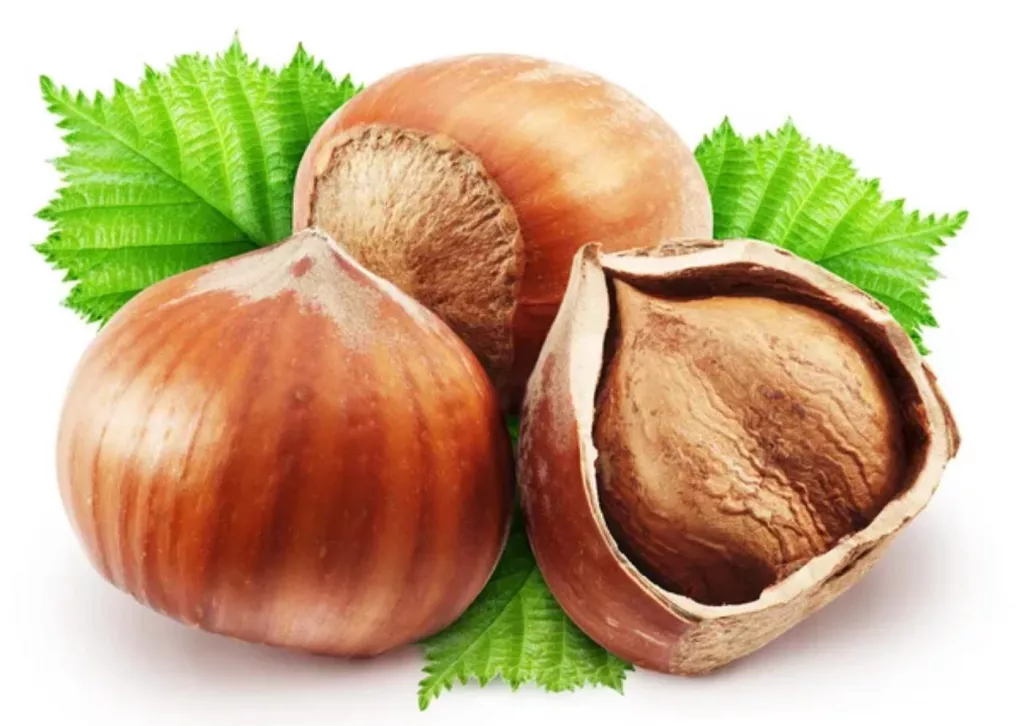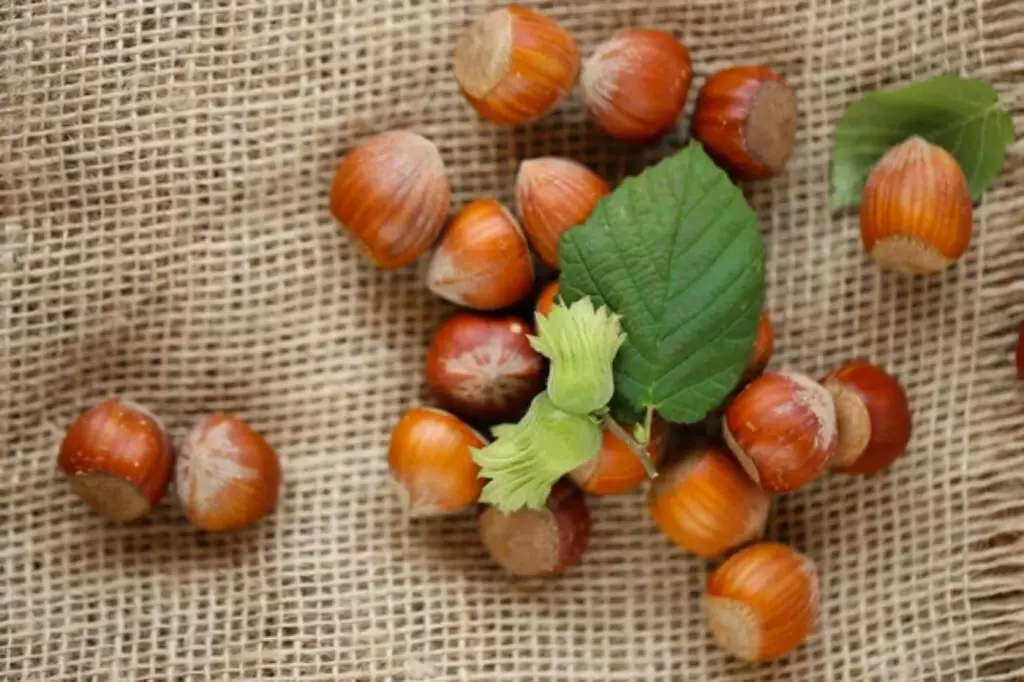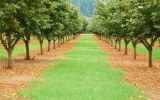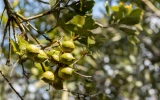Average Hazelnut Profit per Acre (How Much You'll Make)
The income generated from hazelnut farming largely depends on factors such as the age of the trees, the amount of land, and favorable growing conditions. In this article, we will examine the factors affecting hazelnut production so you can get a better picture of the potential average profit per acre for these nut trees.
An acre of hazelnut trees can have an average yield of around 2,000–3,000 pounds of nuts per acre. If sold at a wholesale price of roughly $2.50 to $3.50 per pound, your possible net income can be estimated at a minimum of $5,000 per acre.
Your profits will depend on how you manage your production costs. Some expenses to account for include costs for seedlings, fertilizers, irrigation, and land rental or purchase. We'll get into the details of how you can estimate your potential profits per acre as you read further.
Summary
- The Barcelona Select hazelnut variety has the highest estimated average profit per acre at $6,000 compared to other varieties, which suggests that it may be the most profitable variety to grow.
- With average yields of 2,000–3,000 lbs per acre and a market price of $2.50–3.50 per lb, total revenue from a mature 1-acre hazelnut orchard can be estimated at around $7,500 per year.
- If you have an estimated annual cost of $2,750 per acre, the net profit from a 1-acre hazelnut orchard is estimated to be $4,750 per year, demonstrating that hazelnut farming can potentially be a sustainable and profitable agricultural enterprise.

On this page:
Average Hazelnut Profit per Acre
The table below shows the estimated profit per acre for different varieties of hazelnuts:
| Hazelnut Variety | Estimated Average Profit per Acre |
|---|---|
| Barcelona | $5,000 |
| Barcelona Improved | $5,500 |
| Barcelona Select | $6,000 |
| Daviana | $4,500 |
| Tonda Gentile Romana | $4,000 |
| Tonda Gentile delle Langhe | $4,500 |
| Tonda Gentile Trilobata | $5,000 |
| Ennis | $5,500 |
| Lewis | $6,000 |
| Willamette | $6,500 |
It typically takes around six years for hazelnut trees to start producing a significant amount of nuts. Once they reach this level, you can expect an average yield of around 2,000 to 3,000 pounds of nuts per acre, depending on factors like weather, soil quality, and disease prevalence.

This translates to a wholesale price of roughly $2.50 - $3.50 per pound. Considering these factors, the net income can be estimated at a minimum of $5,000 per acre.
A well-managed and disease-free orchard can remain productive for about 40 to 50 years. This long-term potential allows you to have a sustainable source of income if properly maintained.
For a more detailed breakdown of how profitable hazelnut farming can be, you might find this article helpful.
Estimating Potential Profits From an Acre of Hazelnuts
In this section, we will provide an analysis of the estimated potential profit per acre from hazelnut production based on average yield and price assumptions:
Estimated revenue per acre of hazelnut trees
| Value | |
|---|---|
| Market price per pound | $2.50 - $3.50 (average of $3) |
| Estimated yield per acre | 2,000 - 3,000 lbs (average of 2,500 lbs.) |
| Total revenue per acre | $3 x 2,500 lbs = $7,500 |
Hazelnuts currently sell for $2.50 to $3.50 per pound on average in the United States, but the average price for these nuts is usually $3 per pound.
Mature hazelnut orchards typically yield between 2,000 to 3,000 pounds of nuts per acre depending on variety, soil or climate conditions, and orchard management practices. An acre of hazelnut trees contain a density of 108 trees per acre.
The average yield of 2,500 pounds per acre falls in the middle of the expected range and is a conservative estimate. Yields may be higher or lower in some years depending on factors like weather.
To calculate total revenue from the given data, you may need to multiply the estimated yield per acre by the average market price per pound.

Therefore, in summary, based on current market prices and typical yields, a hazelnut farmer can reasonably expect to generate around $7,500 in total revenue from each acre of mature hazelnut trees under normal growing conditions.
Estimated production costs per acre of hazelnut trees
| Production Expenses For A 1-Acre Hazelnut Farm | Estimated Cost |
|---|---|
| Land costs (rent or ownership) | $500 |
| Planting costs (trees, stakes, fencing, etc.) | $500 |
| Maintenance costs (pruning, weeding, irrigation) | $500 |
| Harvesting costs (labor, equipment) | $500 |
| Marketing/packing costs | $500 |
| Taxes/insurance | $100 |
| Contingency (5% of costs) | $150 |
| Total costs per acre | $2,750 |
Your profits will depend on how you manage your production costs. Some expenses to account for include:
-
Land costs: This covers the rent or ownership of the land used for the hazelnut trees. Suitable land is needed for growing the trees.
-
Planting costs: This includes the costs of purchasing the hazelnut tree saplings or seedlings, as well as any stakes, fencing, or other materials needed to plant and establish the trees.
-
Maintenance costs: Ongoing care is needed such as pruning trees for growth, weeding around the trees, and irrigation. This helps maximize nut production and protect the long-term investment in the trees.
-
Harvesting costs: Labor is required during hazelnut harvesting season to pick the nuts from the trees efficiently. Equipment like ladders may also be needed. Proper harvesting is key to collecting the annual crop.
-
Marketing/packing costs: The hazelnuts must be packaged and prepared for sale to customers. This involves sorting, cleaning, packing, and other post-harvest handling activities.
-
Taxes/Insurance: Standard business costs to cover taxes on the land and operations, as well as insurance to protect the investment.
-
Contingency: An additional amount set aside in case any unexpected costs arise during establishment or operations. This helps the business weather uncertainties.

Estimated profit per acre of hazelnut trees
| Estimated cost | |
|---|---|
| Total revenue per acre | $7,500 |
| Total costs per acre | $2,750 |
| Profit per acre (total revenue - total costs per acre) | $7,500 - $2,750 = $4,750 |
The main revenue source for hazelnut trees is the sale of hazelnuts harvested from the trees each year, which is around $7,500. There are various costs involved in maintaining and operating a hazelnut orchard to generate this revenue. Some of the major costs would include:
- Planting costs - This includes purchasing hazelnut saplings/seedlings, planting equipment, and labor costs for initial planting.
- Maintenance costs - Ongoing costs of maintaining the trees such as pruning, irrigation, fertilizing, pest control, etc.
- Harvesting costs - Labor and equipment costs for harvesting the hazelnuts. This is typically one of the biggest costs.
- Operating costs - Other overhead costs such as property taxes, permits, insurance, etc.
The total estimated costs per acre to maintain and operate the hazelnut orchard works out to $2,750 per year.
To calculate the profit, you need to take the total revenue generated and subtract the total costs incurred. Therefore, the estimated profit per acre that can be realized from hazelnut production is $7,500 - $2,750 = $4,750 per acre per year.
Factors That Impact Hazelnut Profits
In this section, we will explore some critical aspects that you should consider to maximize your hazelnut farming profits:
Soil quality and yield
To achieve the best yield, your hazelnut trees need well-drained, deep, and fertile soil. You can enhance the soil's fertility by regularly adding organic matter and ensuring proper pH levels.
You might also need to regularly monitor soil nutrients to ensure that the trees receive adequate nourishment. Healthy trees, in turn, yield higher amounts of hazelnuts, which can significantly impact your profits.

Climate and weather
Hazelnut trees thrive in specific climates, with mild winters and warm summers being ideal. Extreme weather conditions, such as frost or drought, can negatively affect your trees and reduce their nut production. Perhaps select a suitable location with the right climate to optimize your hazelnut yield.
Pest and disease management
Proper management of pests and diseases helps maintain a healthy and productive hazelnut orchard. Keep an eye on potential threats such as insects, fungi, and diseases that can damage your trees.
Employing effective pest and disease management practices, such as pruning, pesticide application, and proper sanitation practices, will enhance the overall productivity, and consequently, increase your profits.
Harvest efficiency
Once your trees start to produce a significant amount of nuts, you must employ efficient harvesting and de-husking techniques to minimize waste and maximize returns.
By implementing these strategies, you can generate a competitive income per acre from your hazelnut farming operation.



